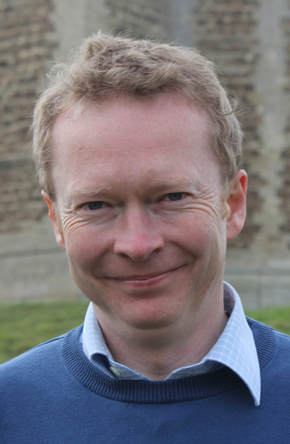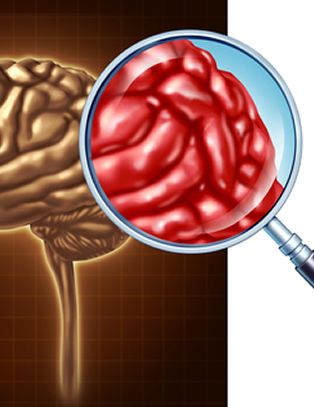Dr Dominic Mort is a Consultant Neurologist
I hope you will find the information provided here helpful. You and your GP may be considering a referral for a neurology opinion. This website is designed to help you and your GP make that decision. If the decision is to see me, then make an appointment with the hospital that suits you best and I will look forward to seeing you with your GP’s referral letter.
As a consultant neurologist, I specialise in the diagnosis and management of a wide range of neurological symptoms and conditions. Many symptoms that we experience have a neurological basis. That does not always mean that a serious disorder underlies all of them – in fact that is only rarely the case – but most neurological symptoms do have a negative impact on the quality of someone’s life, so it can be important to have them assessed properly.
My ethos always is to provide a clear understanding to you of what I think is wrong and how it might best be treated, aiming to give you the best care that I can. I hope you will notice the difference.
I have been fortunate to have had a very thorough neurology training and to have practiced with the best as a consultant. I have been a consultant neurologist since 2007 and in full-time private practice since 2013. I can draw on my experience and, because I allocate plenty of time for consultations, I can do my best to make my experience work for yo

Teaching Awards
- Jun 2009: Top teacher’ Award from UCL for Medical Student teaching
- Jun 2007: Top teacher’ Award from UCL for Medical Student teaching
- Jan 2005: Awarded the Postgraduate Teaching Prize, NHNN, Queen Square
Publications
- Nageshwaran S, Mullin S, Cowley P, Dorward N, Mort D, Weil RS. Subarachnoid haemorrhage as the presenting feature of lumbar spinal arteriovenous malformation. 2013 Pract Neurol Mar 26
- Finegold JA, Belcher R, Noor S, Mort D. A Pain in the neck. 2010 BMJ 340:1001
- Jackson GM, Swainson R, Mort D, Husain M, Jackson SR. Attention, competition,and the parietal lobes: insights from Balint’s syndrome. 2009 Psychol Res 73(2):263-70
- Anderson E, Mannan S, Mort D, Rees G, Kennard C, Husain M 2007 Involvement of prefrontal cortex in visual search. Experimental Brain Research 180(2): 289-302
- Joshi V & Mort D 2008 Case of Late Post-Partum Eclampsia presenting as Posterior Reversible Encephalopathy. Acute Medicine 7(2): 61-104
- Parton A, Nachev P, Hodgson TL, Mort D, Thomas D, Ordidge R, Morgan PS, Jackson S, Rees G and Husain M 2007 Role of the human supplementary eye field in the control of saccadic eye movements. Neuropsychologia 45(5): 997-1008
- Newport R, Brown L, Husain M, Mort D, Jackson SR 2006 The role of the posterior parietal lobe in prism adaptation: Failure to adapt to optical prisms in a patient with bilateral damage to posterior parietal cortex. Cortex 42:720-9.
- Mort DJ and Bronstein AM 2006 Sudden deafness Curr Opin Neurol 19:1-3.
- Kennard C, Mannan SK, Nachev P, Parton A, Mort DJ, Rees G, Hodgson TL, Husain M 2005 Cognitive processes in saccade generation. Ann N Y Acad Sci 1039:176-83
- Mannan SK, Mort DJ, Hodgson TL, Driver, J, Kennard, C and Husain M 2005 Revisiting previously searched locations in neglect: Role of right parietal and frontal lesions in misjudging old locations as new. J Cogn Neurosci17:340-54.
- Jackson SR, Newport R, Mort D, Husain M 2005 Where the eye looks, the hand follows; limb-dependent magnetic misreaching in optic ataxia. Curr Biol 15:42-6
- Jackson GM , Swainson R, Mort DJ, Husain, M and Jackson, SR 2004. Implicit processing of global information in Balint’s syndrome. Cortex 40:179-180
- Mort DJ, Malhotra P, Mannan SK, Rorden C, Pambakian A, Kennard C, and Husain M 2003. The anatomy of visual neglect. Brain 126: 1986-1997
- Mort DJ and Kennard C 2003 Visual search and its disorders Curr Opin Neurol 16: 51-57
- Mort DJ, Perry RJ, Mannan SK, Hodgson TL, Anderson E, Quest R, McRobbie D, McBride A, Husain M and Kennard C 2003. Differential cortical activation during voluntary and reflexive saccades. Neuroimage 18: 231-246
- Husain M, Parton A, Hodgson TL, Mort D, and Rees G 2003. Self-control during response conflict by human supplementary eye field. Nature Neuroscience 6: 117-118
- Hodgson TL, Mort D, Chamberlain MM, Hutton SB, O’Neill KS, and Kennard C 2002. Orbitofrontal cortex mediates inhibition of return. Neuropsychologia 40: 1891-1901
- Schon F, Hodgson TL, Mort D and Kennard C 2001 Ocular flutter associated with a localized lesion in the paramedian pontine reticular formation. Ann Neurol 50: 413-416
- Muqit MM, Mort D, Miskiel K A.and Shakir RA 2001. “Hot cross bun” sign in a patient with parkinsonism secondary to presumed vasculitis. J Neurol Neurosurg Psychiatry 71: 565-566
- Mort D, Marcaggi P, Grant J and Attwell D 2001. Effect of acute exposure to ammonia on glutamate transport in glial cells isolated from the salamander retina. J Neurophysiol 86: 836-844
- Warr O, Mort D and Attwell D 2000. Bilirubin does not modulate ionotropic glutamate receptors or glutamate transporters. Brain Res 879: 13-16
Neurological Investigations
MRI brain or spine
Modern MRI techniques make an invaluable contribution to neurological diagnosis, clarifying aspects of anatomy in exquisite detail and excluding secondary, structural causes of some neurological symptoms. If a patient requires structural imaging of a part or parts of their nervous system, it can be arranged promptly. All the hospitals that Dr Mort works at own their own up-to-date MRI machine. Once acquired, the relevant imaging is reported by expert neuro-radiology consultants that day. The images should be available for review in the clinic room at the time of follow-up consultations. Supplementary techniques include MR angiography (MRA), CT angiography (CTA) and MR venography (MRV).
Nerve conduction studies / EMG
Nerve conduction studies / EMG is a technique which tests the electrical properties of the patient’s nerves and muscles to try to localise the level at which there is a pathological change. The test does not take long and is performed by a consultant clinical neurophysiologist who is expert in interpreting the data obtained.
EEG (electro-encephalography)
EEG is a standard technique for measuring the spatial and temporal distribution of electrical activity across the surface of the brain. Its principal use is to provide supporting information in the diagnosis of epilepsy. In itself though it does not diagnose epilepsy (unless performed whilst a seizure is happening). That is diagnosed from the clinical history. Indeed a significant number of patients with clinical evidence of a definite diagnosis of epilepsy will have relatively normal EEGs between attacks, so it cannot be used to ‘exclude’ epilepsy, for example.
A variety of other tests may be organised by Dr Mort if clinically indicated, including blood tests, ECG, 24 ECG, chest xray, echocardiogram, carotid doppler’s, CT body scanning, whole body PET, DAT scan
Appointments & FEES
Patients consulting me should always have been referred with a letter by their GP or by another consultant practitioner. For obvious reasons, I will insist that my clinic letter goes to the GP and that they are kept fully in the picture at all stages.
A copy of my clinic letter to the GP (or other referrers) will be sent to the patient’s preferred contact address (including their email address, if requested), unless the patient has requested not to receive a copy.
I am registered as a provider with every major medical insurer. Insured patients should contact their insurer to obtain an authorisation code prior to a consultation with me and it is advisable that this is provided at the time of booking the appointment. Sometimes, insurers only cover a proportion of the consultation fee. If this is the case, the patient must recognise that, in consulting me, they are agreeing to pay promptly any shortfall not covered by their insurer as soon as they or we notify them of a shortfall.
FEES
Initial Consultation
Follow-Up
I regularly see self-funding patients as well. Self-funding patients are requested to pay the consultation fee in advance by card over the telephone or by BACS transfer via my secretary.
Please be aware that any diagnostic tests (including blood tests and scans) are not included in my fee and would be invoiced separately by the provider.

